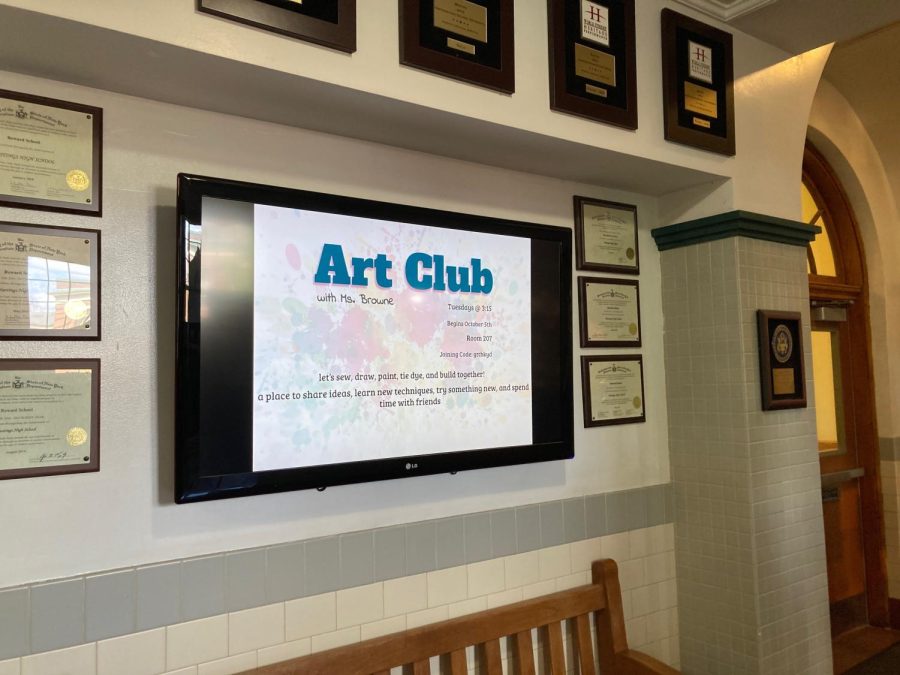Do Clubs Still Work for Students?
April 26, 2022
Clubs are a staple of the high school experience. Popular wisdom says that they empower students to explore topics in more informal settings beyond the reach of the classroom, and that they give students the opportunity to lead their peers in learning about and interacting with specific subjects of interest. In theory, clubs are a vessel for student-led exploration, one that allows groups of peers to organize in a more official manner and find others who share similar interests and values to themselves. In actuality, students have different opinions about the efficacy of this system in actually fulfilling its purpose.
For many students at HHS, clubs serve their purpose very well. There is a wide variety of clubs at HHS that serve a range of interests from improvisational theater to photography, and address many aspects of identity (e.g., the GSA, or Gender-Sexuality Alliance, and the Hastings Affinity Group. As senior Liam Shanley (co-president of the GSA, vice president of the Affinity Group, and president of Photo Club) put it, “clubs are important for a school environment, especially when you’re a freshman, or you’ve just moved into the district.” In his mind, clubs make it much easier to meet new like-minded people. When asked about whether or not he felt students had the resources to start their own clubs, Liam stated that the “administration makes it fairly easy to start a club of your own, and many teachers are eager to lend a hand advising the club and offering a space for these clubs to meet after school.” For him, the main issue with clubs was membership, or lack thereof. “As the year progresses,” Liam notes many clubs see “membership falldramatically.” He added that small flyers are not effective and most students will not listen to announcements or check the lobby television. This observation was corroborated by junior Amelia Verba-Beaudoin (Yiddish Club President), who noted that “it is easy to get people to come once, but it’s difficult to find a steady group of people to come back throughout the entire year.” As time passes, the initial excitement around clubs that was created at the club fair fades and it becomes harder for clubs to maintain membership or for new clubs to get off the ground.
But the issue isn’t just about advertising, although slightly harder to pin down: many clubs seem to lose steam because of general disinterest and student exhaustion. Junior Mati Saland admits that the “school’s selection of clubs has a good amount of variety,” but he personally isn’t interested in any of them, and “by the time school ends I’m exhausted.” Clubs are often a sizable time and energy commitment, and there are students who simply need that time to rest and recharge from a long school day.
With these problems in mind, it is worth considering various solutions to the issues plaguing (may be too strong a word–how about hurting or weakening) clubs at Hastings High School. There are certainly problems surrounding advertising and outreach. The lobby television, while certainly a good effort by administration to amplify student-led events and clubs, is simply ineffective in reaching a broad audience due to the fact that it can only display one student advertisement at a time (if students even care to look at it). The announcements are also often talked over and flyers are often ignored. The solution to this general advertising problem could come directly from students; in fact, it already has. Social media has allowed students to create pages for their clubs (on sites such as Instagram) where they can broadcast news about meetings and events directly to their peers in a manner that is much more likely to be noticed by teenagers. This mode of advertisement also does not rely on coordination with administration, giving students more agency in how they choose to reach the wider community. An online database of the available clubs may also be helpful, for example an “HHS Clubs” Classroom page that could broadcast announcements about club meetings and events across the school.
Likewise, students should certainly continue to start their own clubs to increase the diversity of organizations. Students can work with each other and administrators to try and create their own group around a topic they enjoy. This has a butterfly effect, both giving more students a chance to participate in something they are passionate about and inspiring them to start their own clubs. Overall, the tried-and-true club system definitely has the power to support students in meeting each other and exploring their own passions; it just requires a bit more of a push from students in terms of outreach and organization. In the end, that is what the whole system was intended to do, as it pushes students to independently take charge and get the community aware and excited about their ideas.


















